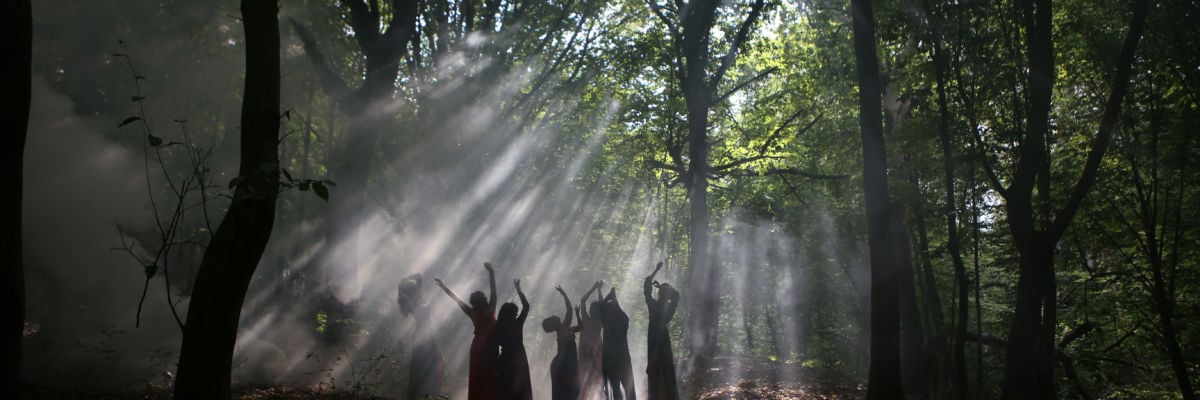
As people reject Christianity and other organized religions and check the “agnostic” or “none of the above” or “New Age” box on belief surveys, witchcraft is on a noticeable rise. In 2019, Pam Grossman declared that “more and more women than ever are choosing the way of the witch, whether literally or symbolically.” Last month, former Disney Channel star Vanessa Hudgens, whom Variety calls a “self-taught student of witchcraft,” released Dead Hot: Seasons of the Witch to inspire viewers to “open their hearts, minds, and soul.” And there are other examples, including hip witchcraft and fears that witchcraft is now too mainstream.
What exactly is witchcraft? This folksy spirituality is a branch of neo-paganism, a return to the worship of gods of all stripes and a turning away from what looks or feels like arbitrary, outdated, patriarchal rules, especially in Christianity.
Witches aim to unleash power from within themselves or harness natural or elemental power to achieve certain goals. Womanhood, the modern witch claims, is mighty, and identifying as a witch, whether by performing spells or hexes, keeping crystals on hand, or merely “tapping into” her inner witch, makes her more genuinely “woman,” someone to be in awe of, or perhaps even to fear. She (or these days, it might even be he) probably won’t look like the warty, green-skinned witches on Halloween decorations, but rather a creature who deals in a concept of womanhood that is dark and mysterious, dynamic and glamorous. She is a woman of the world who holds a fascination for the supernatural, seeking meaning for herself through herself.
Do her efforts pay off? There is no definitive yes or no, and certainly, the efficacy of spells and hexes may be retroactively determined by confirmation bias. But even if they ever do work, let us not be naïve; it is only ever through the permission of the Lord that there might be any worth, or appearance thereof. Not that the witch would agree.
But try as we might to eschew organized religion, the Spirit of the Lord calls to us. Many folks, unfortunately, misinterpret this as an invitation to explore false religions. It feels bizarre to type this, but here it goes: there are witches among us, and it is a problem.
The more people try to turn away from God, the more they go seeking him, and in all the wrong places. So neo-paganism, with Wicca, witchcraft, nature worship, and the like, alongside its counterpart, New Age, have seen a rush of interest. Folks look to the stars, to nature, to crystals, cards, and potions for meaning, answers, and rooting.
It seems, too, that the rise in witches corresponds with the feverish whooping up of late that women’s rights are on the line. What better time to tap into our inner goddess or divine nature than now, when “women’s rights” are under attack?
The dangers of witchcraft are not negligible. Traditionally, witches have been said to pay honor “to the Prince of Darkness, and in return receive from him preternatural powers.” Whether this is the case, over the centuries, there have been recorded confessions of accused witches confirming their involvement with demonic forces.
We mustn’t downplay why these women (and some men) feel the need to practice witchcraft. These people are seeking, and they are restless, and we know that the restlessness they experience will not cease until they find rest in the Sacred Heart of Jesus.
But first, they need to be introduced to Jesus in a genuine and heartfelt way—and it is up to Catholics to do the introducing.
How can we reach out to practitioners of witchcraft? As with any impactful evangelization effort, asking meaningful questions is always a good place to start.
Is the witch interested in deepening her understanding and love of the natural world? The Catholics have saints for that!
Is she looking to understand or tap into the divine? Jesus offers himself intimately and beautifully in the Eucharist, giving us the means to “be perfect, just as your heavenly Father is perfect” (Matt. 5:48).
Is she looking to ascend, through the use of sorcery, from the seemingly endless troubles and woes that afflict her and her loved ones in this life? Prayer and fasting are both powerful ways to align ourselves with God’s plan and make a real impact on those around us.
Is she searching for meaning and power in the use of crystals, potions, or other material objects? The Lord understands humans’ needs for the physical and has provided us with sacraments and sacramentals that we can touch, smell, see, taste, and hear to elevate our bodies and minds to the divine.
Does she want to live more attuned to the ebb and flow of the different seasons and stages of life? The liturgical calendar has it all, from feasts to ember days to entire seasons dedicated to various aspects of our faith, helping us to live a good and holy life.
Is she concerned for “the poor, the downtrodden and disenfranchised”? That is what the invitation to hex Supreme Court justice Brett Kavanaugh a few years ago suggested witchcraft is really for. Well, Catholic charities have cared for and upheld the dignity of millions of people whom the world seems to have otherwise forgotten—and no one has to get hexed.
Does she believe she needs magic as a weapon on the battleground that is our fallen world? In Padre Pio’s words, “the rosary is the weapon against the evils of the world today.”
Is the witch desiring a community of like-minded seekers, especially other women who strive to lead holy, beautiful lives? Hi! Welcome to the One True Church!
We can see that much of what someone interested in witchcraft seeks can be found in the Catholic tradition—but in its full and God-given form, not in a creature-oriented product that has the witch worshiping, relying on, or otherwise misusing creation (including demons), when she could and should be worshiping and relying on the Creator and Sustainer of all things.
The witch puts inordinate power in herself or seeks to harness power that is not granted humans according to their nature. She wants to affect the world and people around her through subversive and often destructive means. She is dissatisfied by the fullness of the humanity given to her by God. She holds typical feminist grievances and finds womanhood infinitely powerful but sadly chained by “the big bad patriarchy.”
The witch is a woman who is broken, lost, and oftentimes angry. She is in pain, whether she will admit it or not, and it isn’t a pain caused by the patriarchy or the injustice du jour. It is pain caused by missing out on God. She is seeking validation for her goodness, value, and beauty as a woman outside how God supports and nourishes womanhood through the Catholic Church. We ought to pray for her—that she might turn, with all the energy she has put into her false spirituality, to love the One who loves her unconditionally and won’t ever stop calling her home to him.



